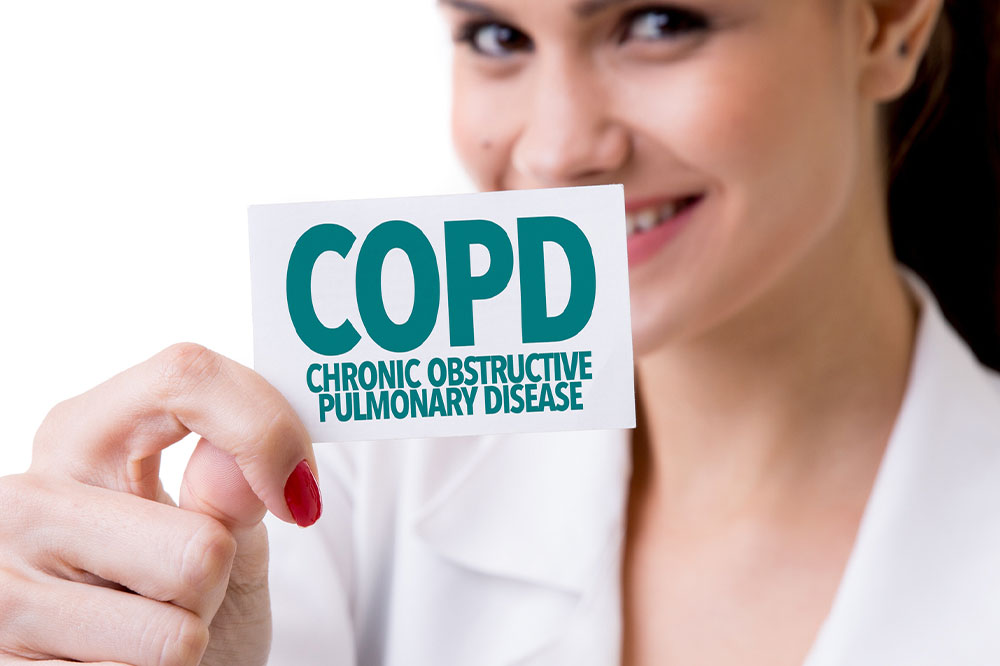End-stage COPD Symptoms to Know

Chronic Obstructive Pulmonary Disease (CPOD) refers to a group of lung and respiratory disorders that can permanently damage tissue and organs. The lungs are tasked with absorbing fresh oxygen and expelling carbon dioxide from the body through respiration. COPD can damage the tissues and disrupt this vital function. There is no cure available for COPD, and doctors advise on the best course of treatment only after considering the severity of these end-stage COPD symptoms.
Stage IV – End-stage COPD symptoms
During the last stage of COPD, people usually suffer from hypoxemia (low oxygen in the blood) or hypoxia (low oxygen in the body tissues). One may also notice a bluish tinge on the skin, as there is not much oxygen circulation in the system. But several other symptoms develop and start to persist.
Severe breathing issues
Experiencing shortness of breath with no or minimal activity is a sign of progression of the respiratory disorder. Some people may also hear abnormal cracking sounds while breathing normally during advanced stages of respiratory failure. This happens when something serious affects the airways from the nose to the lungs.
Issues with daily routine
Being unable to go about one’s daily routine due to breathing problems or sudden shortness of breath is a clear indicator of progressive COPD. Daily activities such as taking a short walk or putting on clothes can cause exertion, which ideally shouldn’t occur otherwise.
Chronic cough
Producing excessive phlegm or experiencing a persistent cough is a sign of damage to the respiratory system. Some people also suffer from constant wheezing as the lungs cannot absorb oxygen efficiently and work overtime in the process. Chronic wheezing can also force a person to feel out of breath for prolonged periods.
Irregular heart rhythm
Experiencing faster heartbeats, irregular rhythms, and restless heart palpitations are among the known and reported end-stage COPD signs. Also, people may experience high blood pressure due to irregular heart rhythms, which increases the risk of pulmonary hypertension.
Fatigue
Unexplained fatigue without too much exertion or activity during the day could also be a major sign of COPD trouble. Patients often experience dizziness and confusion since the body and brain are experiencing a shortage of oxygen.
Unexplained weight loss
People also experience drastic changes in their body weight, with some losing more weight than intended. This happens even if no changes have been made regarding daily foods eaten or exercise regime.
Sleeping problems
Patients with end-stage COPD may experience difficulty getting proper sleep due to these breathing issues.
Note that the symptom flareups will be more frequent and severe during the last stage of COPD. The progression of these flareups will also be more powerful than the previous one. There, one should not waste time and request immediate medical intervention. Timely diagnosis and treatment can help ease the discomforts caused by persistent end-stage COPD symptoms.
End-stage COPD complications
Symptoms aside, many linked health complications can develop among patients.
Respiratory infections and COPD
Prolonged COPD increases the risk of developing pneumonia or the flu, intensifying the symptoms of these respiratory disorders.
Malnutrition and delirium
Patients who suffer from severe anxiety and depression triggered by COPD may not feel like having regular meals or eating less. This could further lead to severe malnutrition caused by ignorance and increase nutritional deficiencies risk. Delirium may also set in if the symptoms and condition progress due to fear and restlessness as the symptoms persist.
Cognitive problems
Intermittently cutting off the oxygen supply to the brain can result in several cognitive development problems. Experiencing memory loss or multiple episodes of confusion are all signs of the disease progression and further affect respiratory functions.
Respiratory failure
End-stage COPD could become profoundly serious when the lungs are unable to take in oxygen or expel carbon dioxide. This could be a sign of organ failure.
End-stage COPD outlook
Doctors usually refer to the BODE index to gauge the end-stage COPD life expectancy. Tests are done to assess current body mass and weight impact, obstruction severity of the airflow, the extent of dyspepsia, and exercise capacity. During stage IV, the drop in life expectancy is estimated at an average of 5.8 years. This number is higher among people who were using substances or were exposed to substances that affect the respiratory system.
For severe COPD patients, doctors suggest palliative care to improve the outlook and quality of lifestyle. Palliative care also allows primary physicians to gauge and understand the best treatment during the end stages to prevent further complications from developing. Some patients may require supplemental oxygen from time to time to avoid being winded or out of breath during the end stages. It is necessary to maintain quality of life as the body’s immune and respiratory functions are compromised during stage IV.
Understand that the severity of the symptoms, life expectancy, and overall outlook will all differ significantly from patient to patient. Doctors will modify their approach based on the most recent diagnosis and treatment plan to achieve the best possible results.

